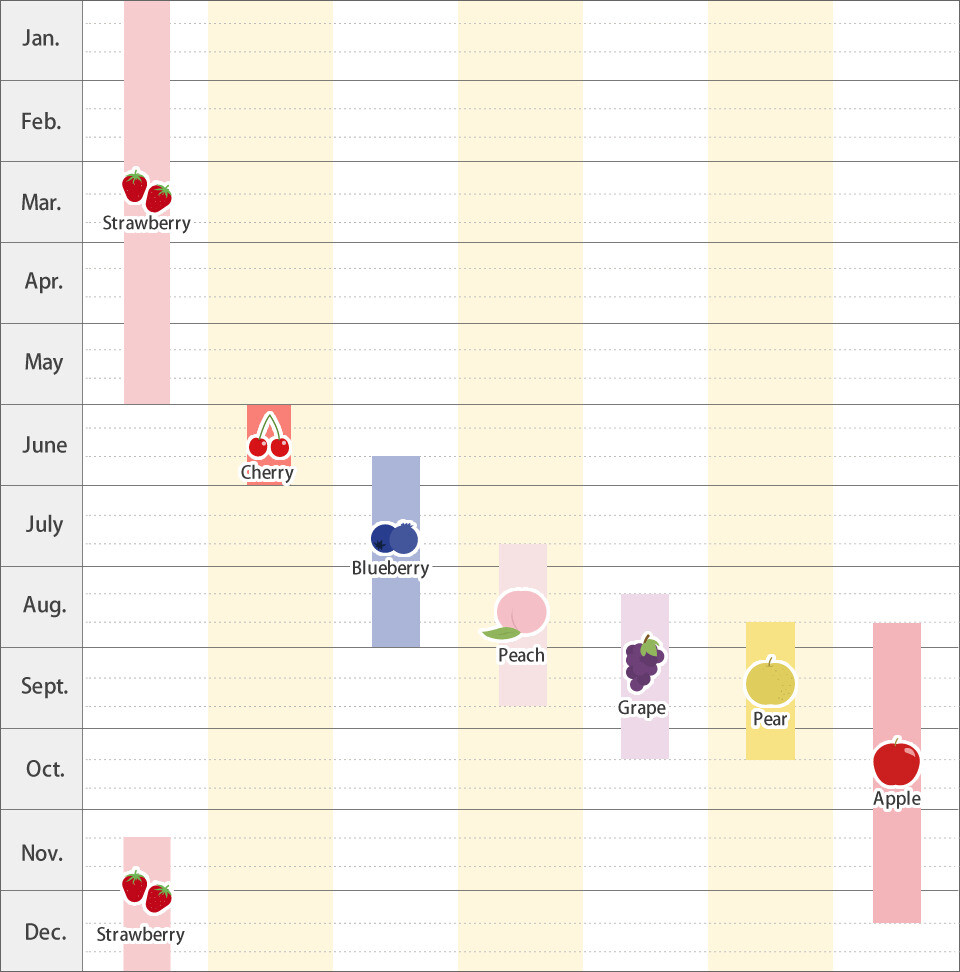
Fukushima Prefecture has been called the ‘Fruit Kingdom’ for its abundance of orchards – in particular, the western half of Fukushima City is overloaded with fruit farms of all kinds and colours. This long strip of farmland is known as the ‘Fruit Line’, with over 20 orchards located in this region alone, and is one of the best places in Japan to enjoy a leisurely fruit picking experience during your trip.
Unlike fruit picking in western countries, which is often an all-you-can-pick experience, fruit picking in Japan more closely resembles all-you-can-eat. You are usually given a set time period after you arrive – likely 30 minutes to an hour – during which you’re welcome to pick and eat as much fruit as you like. You’re asked not to take any fruit home with you from the picking area, although most orchards have a shop where the best of recent batches can be bought, often at a lower price than supermarkets.
Choose Your Season
One of the unique features of an area with so many orchards – and a variable four-season climate like Fukushima’s – is that there’s something delicious in season almost the whole year round. Since Fukushima is Japan’s second-largest exporter of peaches, they are one of the prefecture’s biggest symbols, and you’ll see them on billboards and posters wherever you go. That makes peach-picking season – roughly mid-July through September – one of the most popular times to visit the Fruit Line, and the peaches are first-rate no matter which orchard you visit.
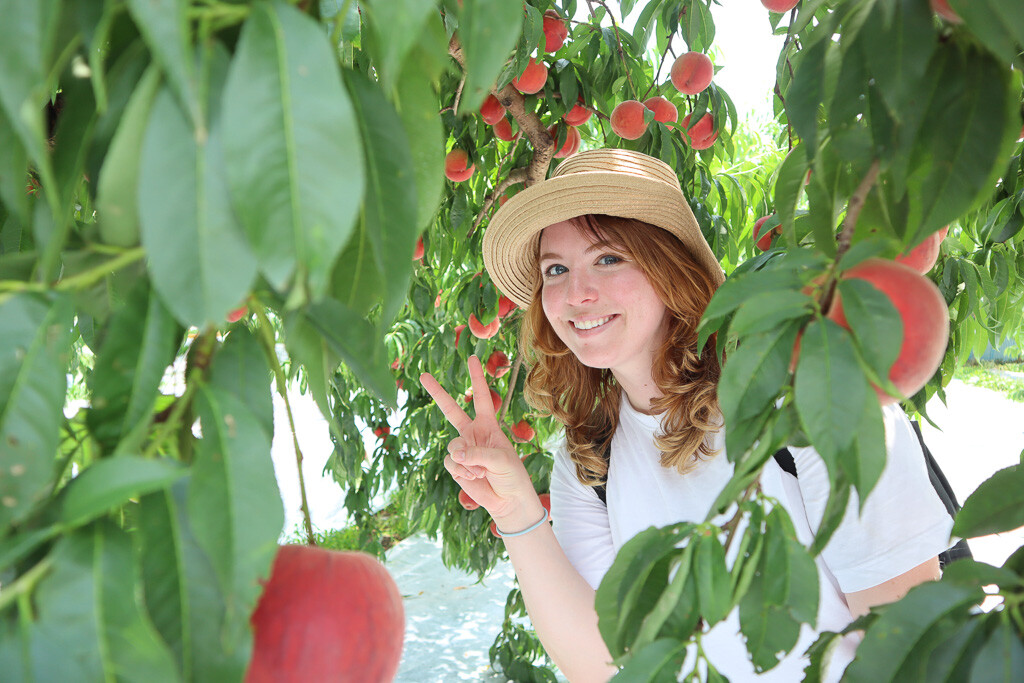
Also extremely popular is strawberry picking, available from November all the way through to May, and apple picking is also a big hit between August and December. These are the main exports of the famous Fruit Line, but depending on the season you can visit and taste everything from cherries and blueberries in summer to grapes and Japanese pears (nashi) in autumn.
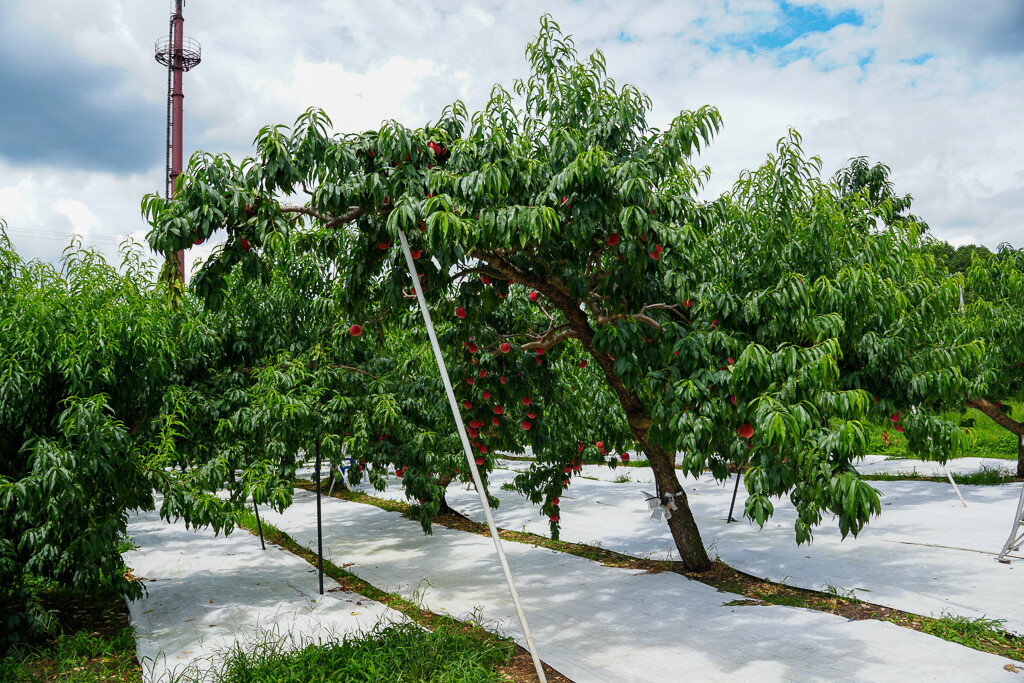
What to Expect
The procedure is slightly different for each orchard – some stores have a ticket vending machine, others you pay at the front counter – but on the whole, orchard staff are very familiar with overseas visitors and will be happy to help you. During the fruit picking experience, a member of the fruit picking staff will explain how to recognise the difference between ripe fruit and non-ripe, and many orchards also have fruit on nearby tables that has been recently picked and is also free for you to eat. Depending on the fruit you’re picking, you may also be given a bucket (for example, for peach skins or pits) and a small knife to cut fruit or peel skin (although fruits like peaches and apples are arguably sweeter with the skin still on). Although English explanations are rarer, it’s relatively easy to understand the staff via gestures and demonstrations.

After your time is up, retire to the main shop of the orchard to browse the local products – juices and jams are especially popular and make for good gifts. Marusei Orchard in particular boasts an onsite café that uses their own produce in a variety of sweet treats and parfaits, and there are pictures to help you decide.
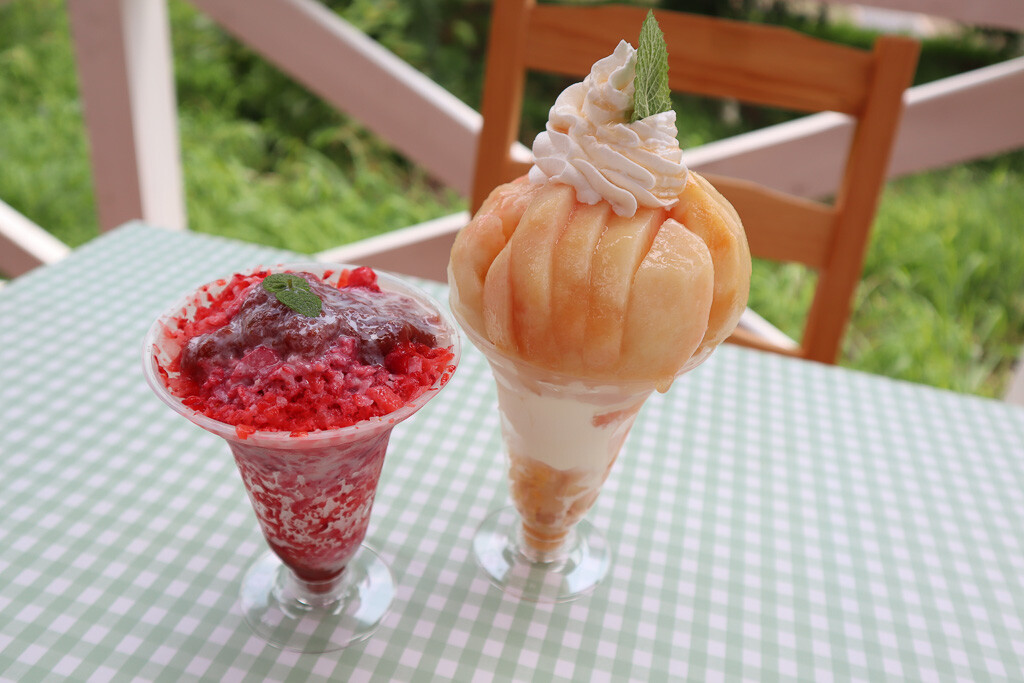
Getting to the Fruit Line
Since buses are available but infrequent, and the Fruit Line is littered with orchards run by different families and companies, using a car or bicycle offers more freedom to explore the area and enjoy the local scenery. Here are our recommendations for getting to the Fruit Kingdom for yourself...
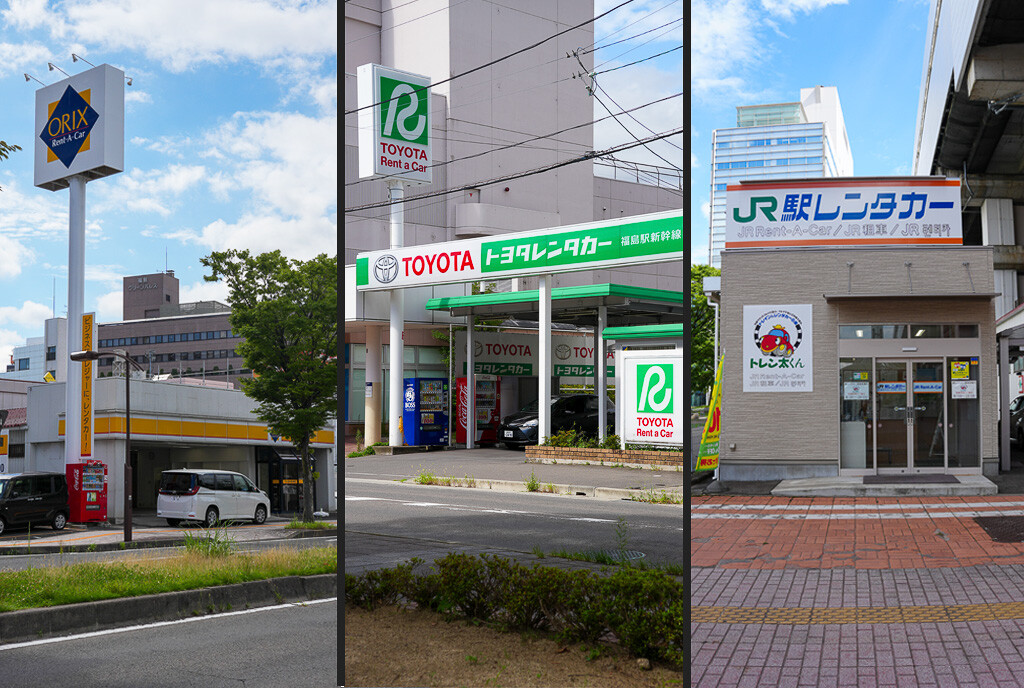
Car Rental
Renting a car in Japan is an excellent way to get around, and the sign-up process is surprisingly easy. In Fukushima City there are three rental stores close to the west exit of the bullet train station: the JR rental store located near the west exit bus stops; the Toyota store opposite the west exit courtyard; and the Orix store one block further west. All three offer single-day rentals (small ‘kei’ cars have four seats and are the most affordable option) and can be booked online with English support.
On the day of the rental, go to the store and state your name. After checking your paperwork and ID, the store staff will ask you to inspect the car for damage, and mark any scratches or dents on their inspection sheet so you’re not charged when returning the vehicle. If required, the staff can also change the car’s navigation system to English.
In order to drive in Japan, visitors must obtain an International Driver’s Permit and keep it on their person at all times while driving. You also must show the permit to staff during the rental process.
JR Rent-a-car / Toyota / Orix / Nippon
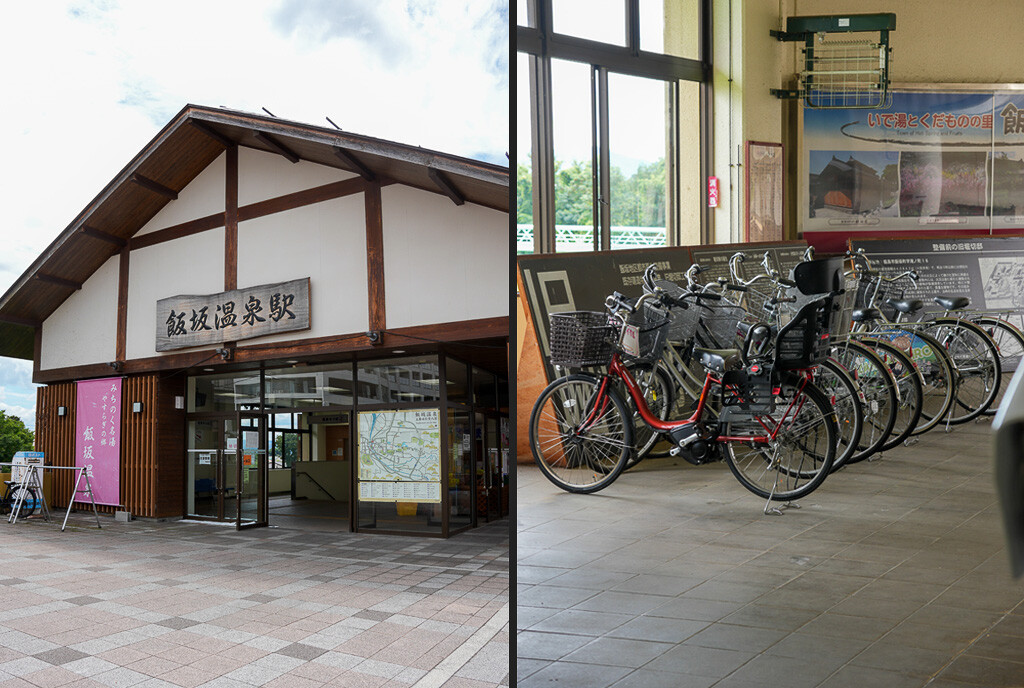
Bicycle Rental
Exploring the countryside on a rental bicycle is one of the best ways to experience Japan – when the weather is nice – and it’s a great way to ‘hop’ multiple orchards if you’re looking to peruse the local products. Despite being ringed to the west by the Azuma mountain range, the Fruit Line is largely flat with a splendid green atmosphere, with most roads being flanked by fruit trees.
As an example, if going to Marusei Orchard, take the Izaka Line to its final station of Iizaka-onsen (approx. 20mins), and rent cycles at the station. From there, take a leisurely bike ride headed west for about 10-15 minutes until you arrive at the orchard. (This itinerary would also work for visiting any orchard on the Fruit Line by bicycle.)
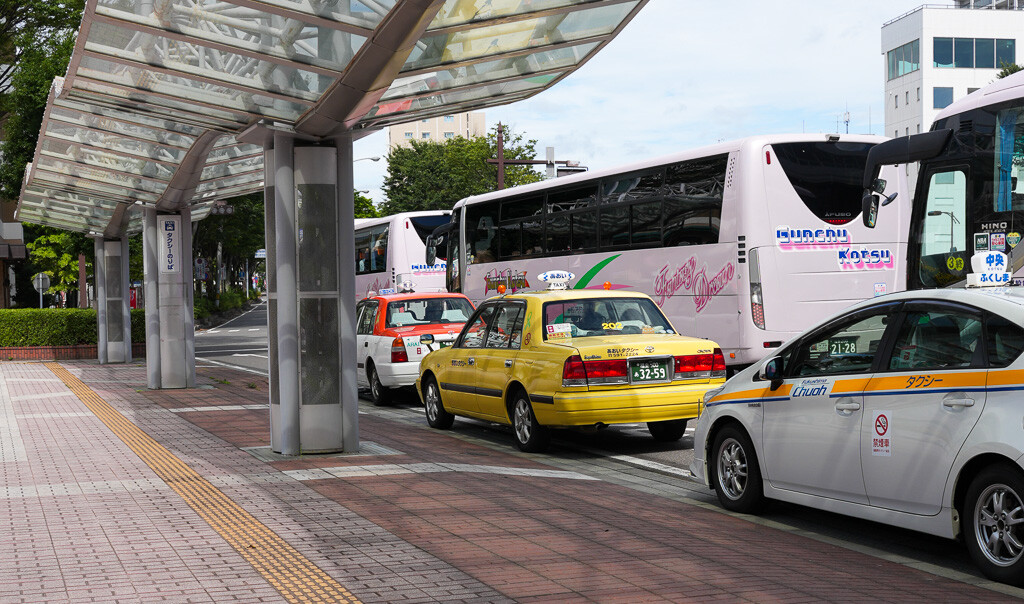
Taxi
Taxis are plentiful and available from the west exit of Fukushima Station, with drivers very familiar with the layout of the Fruit Line and able to drop you at any orchard of your choice. If returning to Fukushima Station, the orchard staff would be able to call a taxi to pick you up. However, since a round trip to the west of the city would likely cost around 7,000 yen – roughly the same price of a rental car for the day – it may be worth considering driving yourself or taking a train and renting bicycles.
To learn more about the Fruit Kingdom and book your spot, visit our reservation page.
